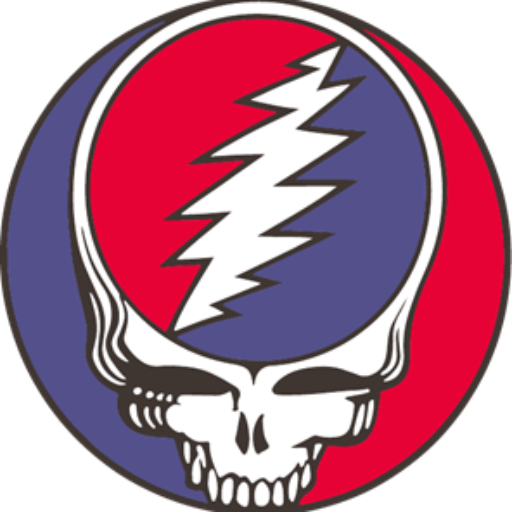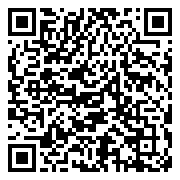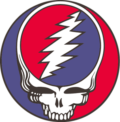Grateful Dead 12-31-1981 Oakland Auditorium New Year's Eve
 Dead Set Live
Dead Set Live
Grateful Dead - 12/31/1981 Oakland Auditorium New Year's Eve
The Grateful Dead’s New Year’s Eve show on December 31, 1981, at the Oakland Auditorium (later known as the Oakland Coliseum Arena) is one of those legendary performances that captured the band at the height of their creative powers during the early '80s. This concert, a part of their iconic New Year's Eve tradition, marked not only the celebration of a new year but also the Dead’s mastery of live improvisation and audience interaction. The show is remembered for its vibrant energy, unique setlist choices, and the band's ability to make every performance feel like an event.
A Time of Transition
By the time the Grateful Dead rang in 1982, the band had been through a number of changes in their lineup and sound. The 1980s were a period of rejuvenation for the Dead, who had fully embraced the more polished production values of the era while still retaining their improvisational edge. The band had honed their skills throughout the '70s, with their sound evolving from their folk-rock beginnings to an expansive, jazzy, and psychedelic space. By 1981, the band had been together for over 15 years, with the constant core of Jerry Garcia, Bob Weir, Phil Lesh, Bill Kreutzmann, and Mickey Hart solidifying their chemistry. Brent Mydland had joined as keyboardist in 1979, contributing both his musicality and a unique vocal style that complemented Garcia’s.
The December 31, 1981 New Year's Eve show would be part of a series of annual celebrations that the Grateful Dead had been holding at different venues over the years, making these performances part of the band’s mystique. This show in Oakland would turn out to be another example of how the Dead were able to make each New Year’s Eve performance truly special, marking it with both fun and a sense of musical adventure.
The Show: A Perfect Blend of Classic Dead
The evening began with the band in high spirits, ready to give the audience a night to remember. As was customary for many Dead shows during this period, the New Year's Eve concert offered a combination of beloved classics, new material, and extended jams. From the first notes of "Hell in a Bucket", which was still a relatively new song for the band, it was clear that this would be a lively and memorable show. The song’s upbeat, driving energy set the tone for the rest of the night, signaling that the Dead were in full party mode for the year-end celebration.
Set One opened with "Hell in a Bucket" followed by "Cold Rain and Snow", showcasing their ability to move seamlessly between their newer material and their classic early catalog. "Cold Rain and Snow" brought the audience back to the band's folk and bluegrass roots, offering a contrast to the high-octane opener. The energy was palpable as the Dead quickly transitioned into "Althea", a song from their 1980 Go to Heaven album, that would become a regular favorite in their live performances.
But it was the way the Dead let loose in their jams that really defined this show. "Jack Straw", "Ramble on Rose", and "Row Jimmy" followed in succession, each one unfolding like a sonic journey that would build and expand into unique improvisations. These songs were familiar to their audience, but the way the Dead explored them on stage made every version special.
The highlight of Set One was the jam between "Ramble on Rose" and "Row Jimmy". The interplay between Jerry Garcia’s soulful guitar and Brent Mydland’s jazzy keyboard runs allowed these songs to take on a life of their own. The vocal harmonies, particularly between Garcia and Weir, added a sweet layer to the tracks, while Phil Lesh’s bass and the drum rhythms from Bill Kreutzmann and Mickey Hart provided a foundation for the spontaneous exploration that had become a hallmark of Grateful Dead performances.
The Countdown to Midnight and the Second Set
As the night wore on and the clock ticked closer to midnight, the Dead’s fans were ready for a celebration. New Year’s Eve shows were always about more than just the music; they were about the collective energy between the band and the audience. This night would be no different, and when midnight finally arrived, the Dead embraced the moment with a special rendition of "Not Fade Away", a song with a famously strong rhythm section and a celebratory vibe. The crowd responded in kind, with the Dead’s improvisations creating a shared musical space that felt both intimate and communal.
Set Two took off with more explosive energy. The Dead didn’t waste any time in making the most of their time together on stage. A spirited performance of "Shakedown Street", from their Terrapin Station album, was a perfect example of how the band could combine funk, rock, and improvisation into something that could fill the entire auditorium with sound. The rhythm section was tight and funky, while Garcia’s lead guitar soared above the groove, pushing the boundaries of what was possible in live music at the time.
As the night wore on, the Dead's deep catalog of songs was on full display. Tracks like "Uncle John's Band", "Sugar Magnolia", and "Casey Jones" kept the crowd engaged, each song evolving as the band played off the audience’s energy. The "Uncle John’s Band" into "Drums", and then "Space", was an absolute highlight, as the Dead explored free-form jams that stretched out in unexpected directions, only to return to the familiar tune with new energy. The band’s improvisation during these moments allowed them to expand on their established material, making it fresh and exciting each time they performed it.
The Energy and Legacy
By the time the second set wrapped up, the energy in the room was palpable. The Grateful Dead had played their final notes of 1981, ushering in the new year with a mix of celebration, community, and musical magic. The encore, "Johnny B. Goode", was a fitting finale to a night that had brought together everything the Grateful Dead was about: classic rock, folk, jazz, and an unpredictable journey of musical exploration.
The Oakland Auditorium New Year’s Eve show on December 31, 1981, is a shining example of the Dead at their peak during the early '80s—confident, creative, and full of passion. The performance demonstrated the band's ability to blend their extensive catalog of songs with their love of improvisation, creating a night that would be cherished by those lucky enough to witness it.
This New Year’s Eve show remains a cherished part of the Grateful Dead's extensive live archive, offering fans a glimpse into a unique period in the band’s evolution. It’s a performance that captures the Dead’s mastery of live music, their incredible chemistry as a band, and their enduring relationship with their audience. Whether you were there that night or you're hearing the show for the first time, it’s clear that the Grateful Dead’s 1981 New Year’s Eve concert was one for the ages—an unforgettable celebration of music, friendship, and the spirit of the Deadhead community.


